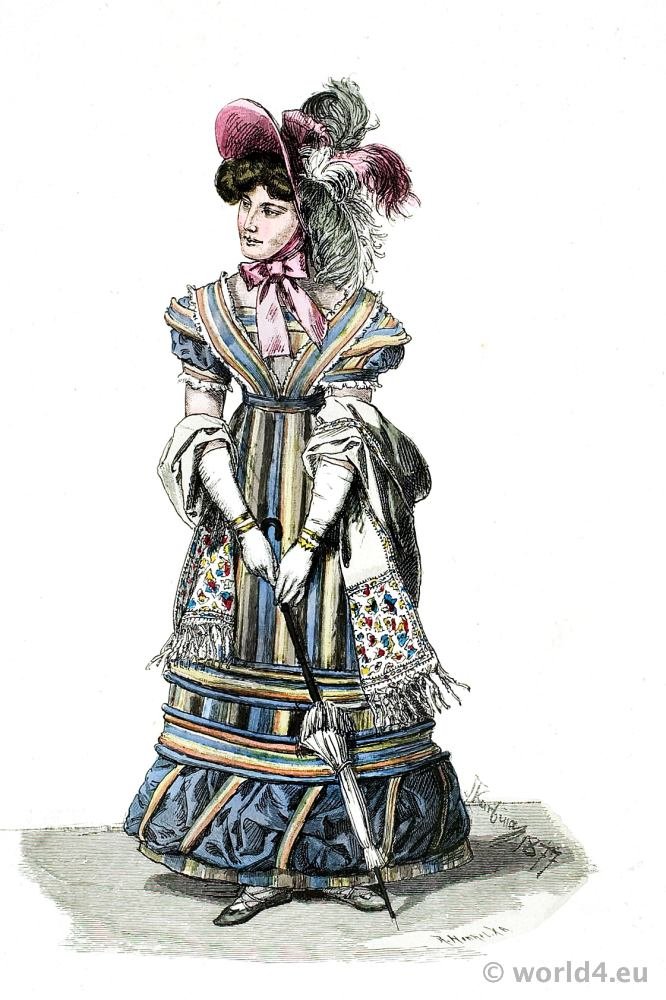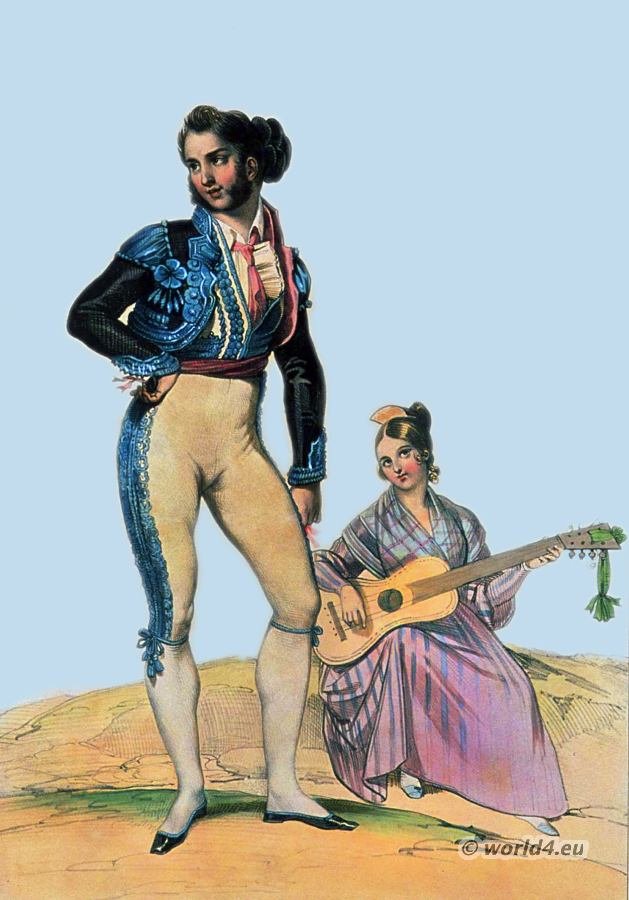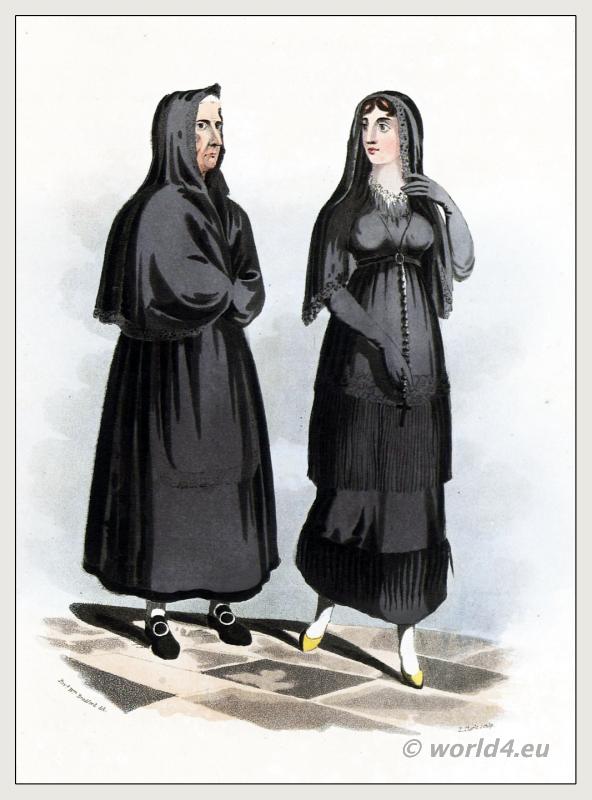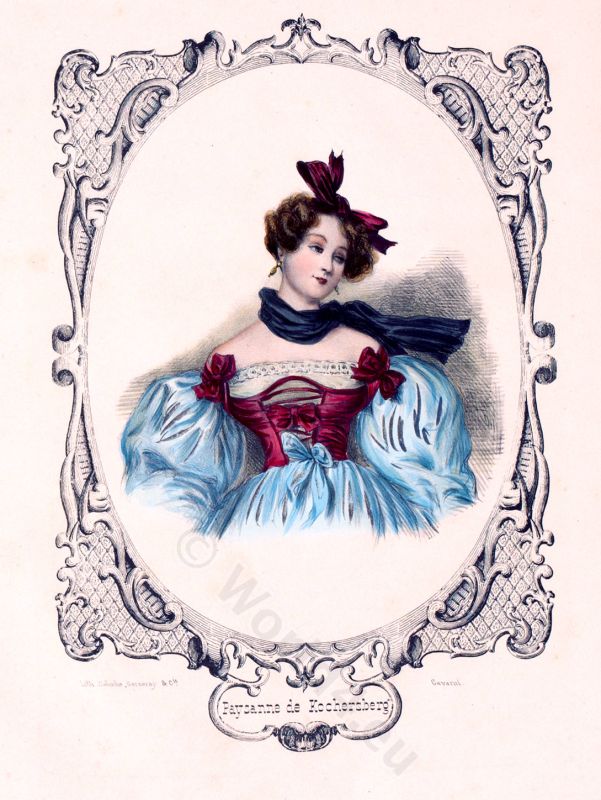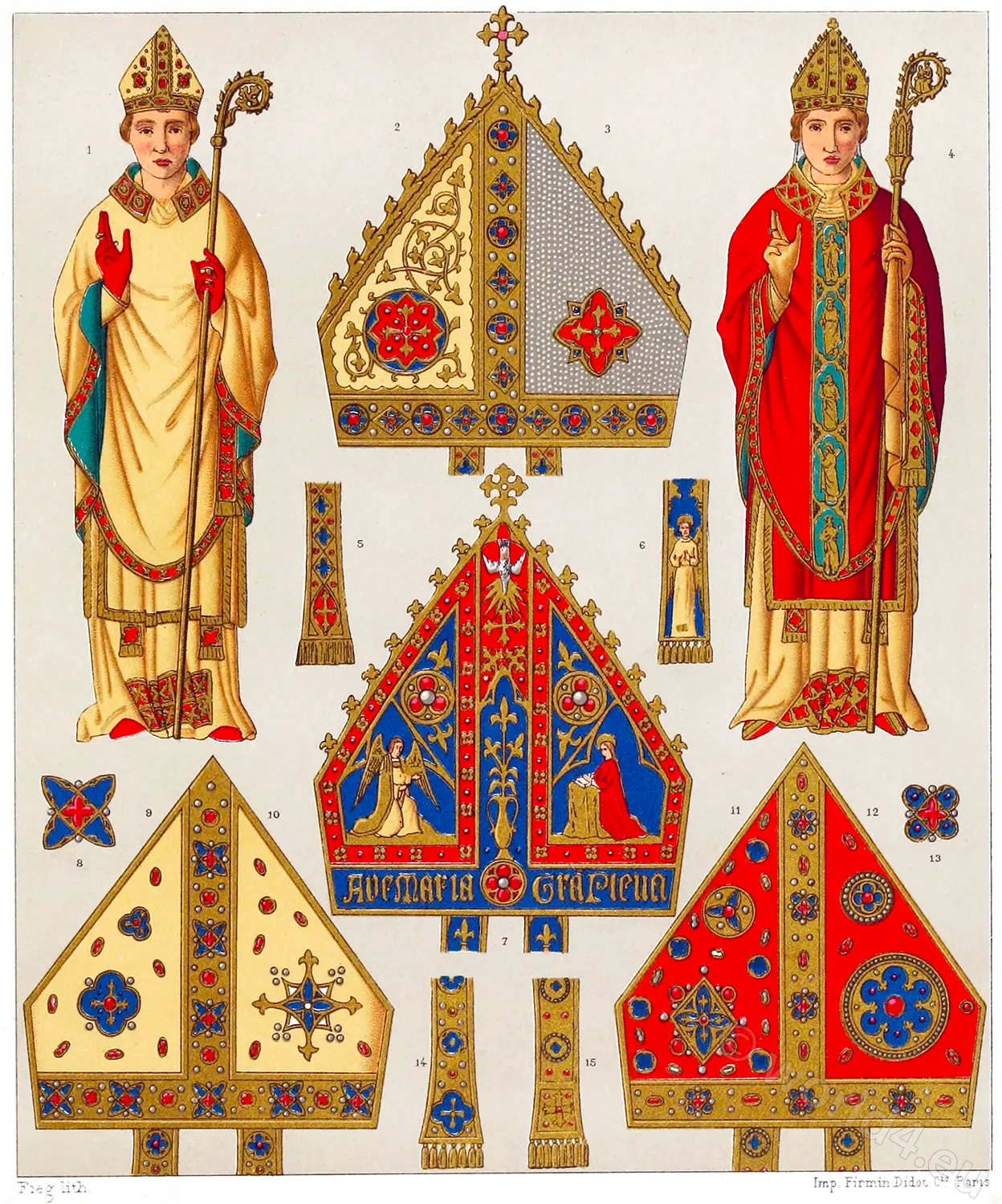
Costume Espagnol, Bolero.
Spanish bolero dancers. Two Spanish women with castanets dance the bolero.
The bolero is a Spanish dance in moderate 3/4-time, often with changes of meter, which evolved from Contradanza and Sevillana. It was invented in 1780 by Sebastian Zerezo, a dancer at the Spanish court in Cadiz.
It is danced by two people with castanets and accompanied by a zither or more instruments. Boleros accompanied with singing and guitar are called Seguidillas boleros.
Source: Costumes historiques de ville ou de théatre et travestissements. Author: Jacques-Jean-Marie-Achille Devéria. Publisher Paris: Goupil et Vibert. Publisher London: Charles Tilt 1831-1839. Printed by: Lemercier & Cie.


